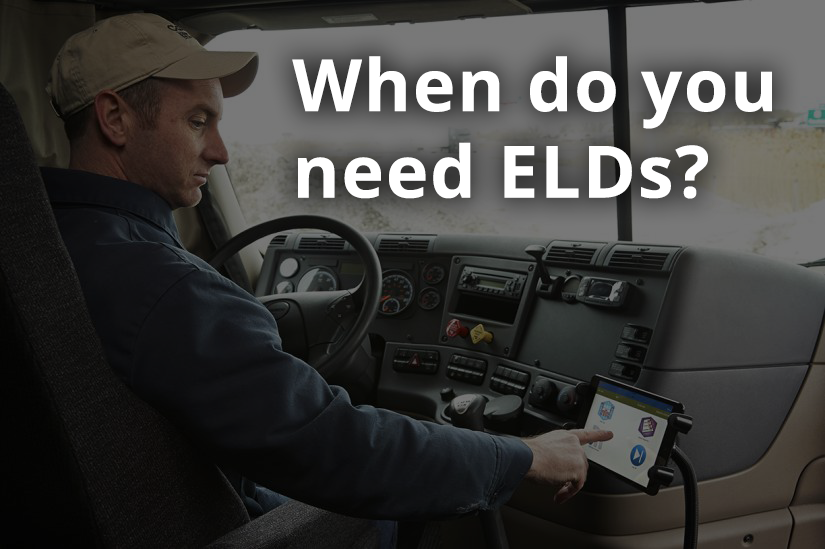Why use Split Sleeper Berth Provision?
The split-sleeper berth rule is a way to split up an entire 10-hour rest period into two separate break periods. One useful example of split-sleeper is to make use of split-sleeper periods as drop-off or pick-up times, so that you can have more time on the road.
The key aspect of how Split-Sleeper helps your hours is that the split-sleeper berth provision moves your Shift Window forward.
Split-Sleeper Berth Rule Explained
There are a few key aspects of split-sleeper berth periods that you have to know. First, split-sleeper berth periods can be split into 8/2 and 7/3 only. Second, short breaks can be in Off-Duty or Sleeper Berth duty status. Third, split-sleeper berth periods do NOT count towards shift limits.
The FMCSA is looking into whether they will include 6/4, and 5/5 as support sleeper berth, but currently this is not implemented yet.
You’re able to use the split-sleeper provision in periods of:
- 7 hours (long-break) and 3 hours (short-break)
- 8 hours (long-break) and 2 hours (short-break)
Before you continue reading: The Split-Sleeper berth provision only applies to drivers driving a vehicle with a sleeper berth. This will be verified by the DOT/NSC during an audit!
How to calculate your Split Sleeper Berth Hours
Split Sleeper Berth rules are not supposed to be complicated. Here we provide a clear and simple guide that provides explanations and examples of how you can use split-sleeper berth provisions properly.
Calculating your shift window is the most complicated part of the split-sleeper berth rule. Below we’ve provided examples to make it as simple as possible. When you combine 2 break periods (8/2, or 3/7), the shift-window window moves forward to the end of the first period.
7/3 Split Sleeper Example

Once the 7 hour sleeper break has been completed at midnight, the driver only needs to start counting their shift from the end of the first break which in the example above is 11am. In this example showing the 7/3 Split Sleeper in action, the driver will have counted 4 hours driving, and 6 hours on-duty towards their shift by the end of the day.
At midnight the next day, the driver will have 8 hours On-Duty time remaining, and 7 hours Driving remaining when he or she starts their shift.
Want to learn more about other hours-of-service tricks? Visit our simple Hours-of-Service guide to learn more.
8/2 Split Sleeper Berth Example

Once the 8 hour sleeper long break has been completed at midnight, the driver only needs to start counting their shift from the end of the first break which in the example above is 1am. In this example showing the 8/2 Split Sleeper in action, the driver will have counted 3 hours driving, and 6 hours on-duty towards their shift by the end of the day.
At midnight the next day, the driver will have 8 hours On-Duty time remaining, and 7 hours Driving remaining when he or she starts their shift.
Frequently Asked Questions
Is it okay to use Off-Duty for the short break (2 hour or 3 hour)?
It is okay to use Off-Duty or Sleeper Berth for short breaks. What’s important here is that the short break (2 hours, or 3 hours) does not have to be in Sleeper Berth duty status.
In both situations, you will have a valid Split-Sleeper. A couple things to remember here are that your short break cannot be a combination of Sleeper Berth and Off Duty, it has to be one or the other! The other thing to keep in mind is that long Breaks (7 or 8 hours) can only be in Sleeper Berth duty status.
Do split-sleeper break periods reduce shift time?
For Shift Limits Split-Sleeper berth periods do not decrease shift time. If you’re using the split-sleeper berth provision, each of your breaks will not count towards shift limits. That means that, done properly, you can extend your shift beyond 14 hours.
How can I get my full hours back during a split-sleeper?
Extending your long break (8 or 7 hours) to 10 hours will give you full hours back. If you take 10 hours during your split-sleeper berth, you will reset your entire Driving time and On-Duty time limits.
Can I use my second break to contribute to the first break for another split-sleeper run?
Yes, you can move your shift window again by completing matching another split-sleeper period the next day
Here is a quote from our conversation with the DOT:
If a driver does 10 hours in the sleeper berth and has something to pair it with it can be used as a split sleeper berth…
Based on the rule, any period of time that is part of a split sleeper berth calculation is not counted towards the 14 hour window.
Safety Investigator
Washington State Division
Federal Motor Carrier Safety Administration
Using continual split-sleeper periods, you can keep moving your shift window forward. For example, you can continually do 3 + 7 + 3 + 7 + 3 (or 2 + 8 + 2 + 8) periods.
In Day 1 above, the driver completes a standard split-sleeper log. At 24:00 (midnight at the end of the day) the driver would have 7 hours driving remaining, and 8 hours on-duty remaining.
Split-Sleeper and Hours of Service
If it's taking some time to get the hang of split-sleeper rules, that's okay. It is not the easiest hours-of-service rule to understand. Learning to calculate how split-sleeper affects the shift window take some practice.
If you’re still confused, the FMCSA has provided a very useful tool to calculate hours-of-service here: ELD – Educational Tool for Hours of Service (dot.gov)
We know sometimes split-sleeper can be confusing, and hopefully with the examples above, they can clear the air. If you have any questions, please feel free to reach out to Switchboard and our team is ready to answer any questions you have about Hours-of-Service.





.png)

.png)





